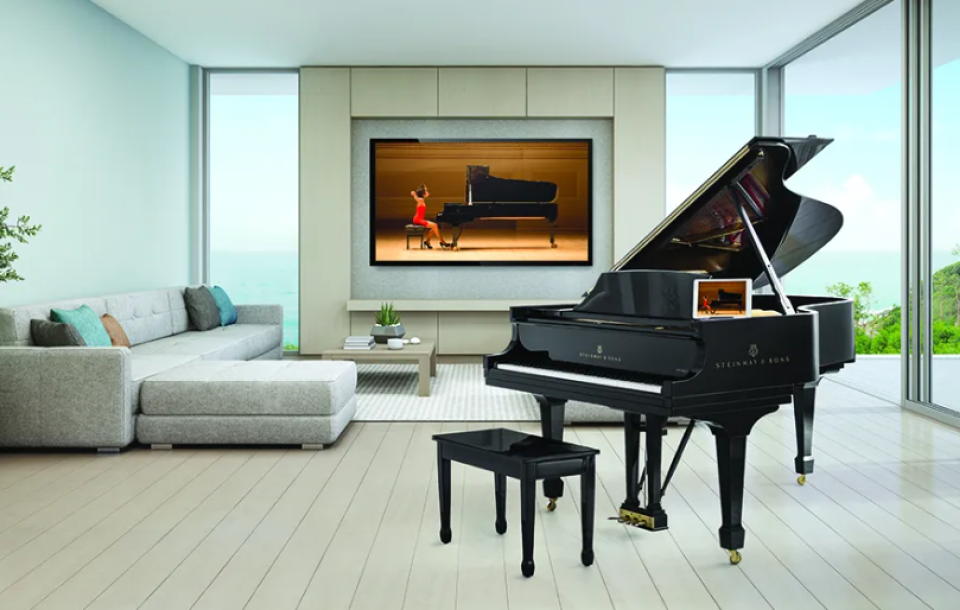How does the Steinway Spirio work?
On the back of each key there is a solenoid, a kind of electromagnet. It pushes up the key, in the same way a pianist pushes down the key at the front. The very high resolution of Spirio distinguishes it from previous systems. The key on a grand piano moves down by about 1 cm when it is pressed. Spirio can control this in more than 1,000 steps and has a refresh rate of more than 800 times per second. Thus, Spirio can play better than any pianist. This allows a top pianist's performance to be recorded and reproduced in exactly the same way. No loss, no difference, 100% the same acoustic experience as if the pianist were sitting at the piano.
What are the advantages compared to a “regular” Steinway?
The Spirio system is decoupled from the piano action and does not affect the instrument's playing quality in any way. A Steinway with Spirio remains 100% a Steinway. The main advantage is that with Spirio you can get even more out of the instrument. It can “simply” be used to play on, but now you can also enjoy a private concert at home in the evening. With Spirio r (r = record) you can also record home concerts or follow your own artistic development. This technology also offers many new possibilities for concert halls and educational institutions. That’s because the Spirio has a built-in music editor. In the future, Spirio Cast will make it possible to communicate in two directions at the same time. In concrete terms, a pianist will be able to take piano lessons from a teacher on the other side of the world.

How many pre-programmed tracks are available?
There are already more than 5,000 recordings in our library, and new ones are added every month, from classical music to jazz and pop. The most recent launch of Spirio Cast makes it possible to follow concerts live. This gives every Spirio owner the opportunity to enjoy two live concerts per month. All this music and live concerts are included with the instrument by default. So a Steinway Spirio is not only a top-quality musical instrument, but also an ever-expanding source of breathtakingly beautiful acoustic piano music.
Are works by deceased pianists available?
It is indeed possible, using specific software, to bring back to life piano greats of the past. The library contains recordings by Vladimir Horowitz, Art Tatum, Arturo Beneditti Michelangeli, Bill Evans, Arthur Rubistein, George Gershwin and many others. The complete Goldberg Variations, performed by none other than Glenn Gould, are one of them.
Who is the target audience for such a piano?
Anyone who wants the best piano and to take advantage of today's digital capabilities. This could be a private individual willing to enjoy the finest piano music at home, or a conservatoire aiming at recording student performances to give them more insight into their playing style. The possibilities are endless. The Rotterdam Conservatory has a Spirio r and uses it intensively.
Does this piano threaten to replace real pianists? How do artists feel about it?
The pianist is at the heart of Spirio! The aim is not to achieve technical perfection, but to recreate the humanity of the performance better than, say, an audio recording. The technology is also intended to be used creatively. It complements and enriches rather than replaces. The enthusiasm of pianists confirms this. With more than 5,000 recordings in the library, it is clear that a large group of pianists are enthusiastic about this new development. Some notable names include Yuja Wang, Olga Kern, Lang Lang, Stanislav Khristenko, Kirill Gerstein, Jeremy Denk, Hayato Sumino, Richard Goode, etc.
Want to learn more? Find out all about the Steinway Spirio on the Pianos Maene website.

